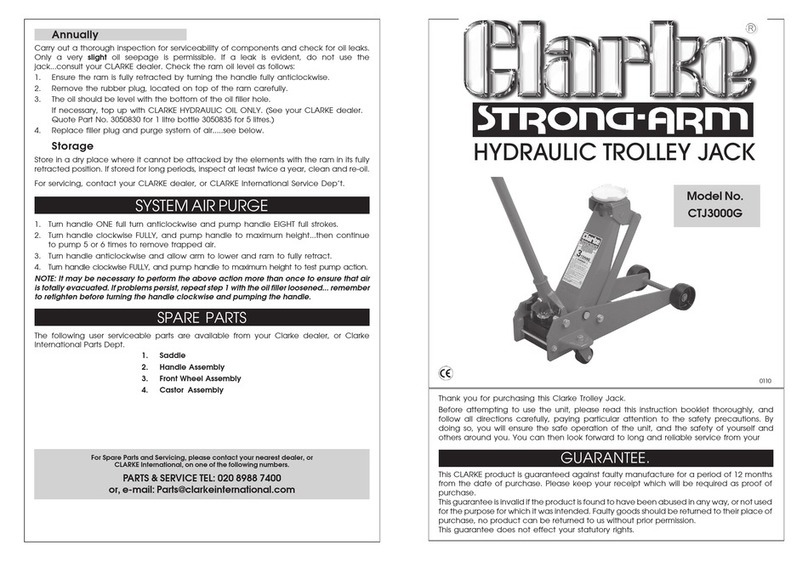
4
USE AND OPERATION
Prior to operate the jack, a small assembly operation is required:
1 Start by removing the upper cover, placing the jack handle in posi-
tion (4, fig.5) and secure the bolt (26) and it’s washer (27) which are
included in a kit (fig.6). Replace the cover.
2 The handle has four positions (fig. 5): Foldable for transportation and
packaging (1), out of operation (2), movement (3) and in operation (4).
Each position is achieved by disengaging the trigger lever (1,fig.7). The
purpose of the handle is to position the jack or simplify it’s movement.
Do not exert any pressure on the handle.
3 Should the jack need to be packed for transportation, remove the
screw (26) and washer (27) and move the handle to position 1 (fig.5).
4 It is essential that an air filter lubricator is installed (fig.2) which is
drained daily
5 Drain the compressor daily. Poor air quality damages essential parts for
a proper operation of the jack.
6 Prior to connecting the air supply hose to the connection on the handle
(3) it is necessary to check that the control lever (2) is in the OFF posi-
tion (Fig.7). The air hose should not have a section inferior to that of
the air connector (3). If unusually long hoses are used, the air pressure
should be increased.
7 Ensure that the same air pressure is going to be maintained during
operation. Optimum performance of this jack is obtained with a
pressure of 7–10 kg/cm2and a minimum air flow of 280 l/min.
8 A final operation to be performed prior to using the jack is the elimi-
nation of any air that may have entered the hydraulic system during
transportation.
With the air hose connected, push the control lever (2, fig7) towards
the DOWN position, holding it there for some seconds.
Move the control lever to the UP position to complete a load free
lifting cycle. Now move the lever (2) to the DOWN position to retract
the pistons and hence check that the lowering action is performed
steadily without any jerking movements. If the lowering action is
unsteady, repeat the cycle until the lowering of the pistons performed
in a steady and uniform way. This shows that the draining operation
has been successfully completed.
9 Now the jack is ready for operation.



























